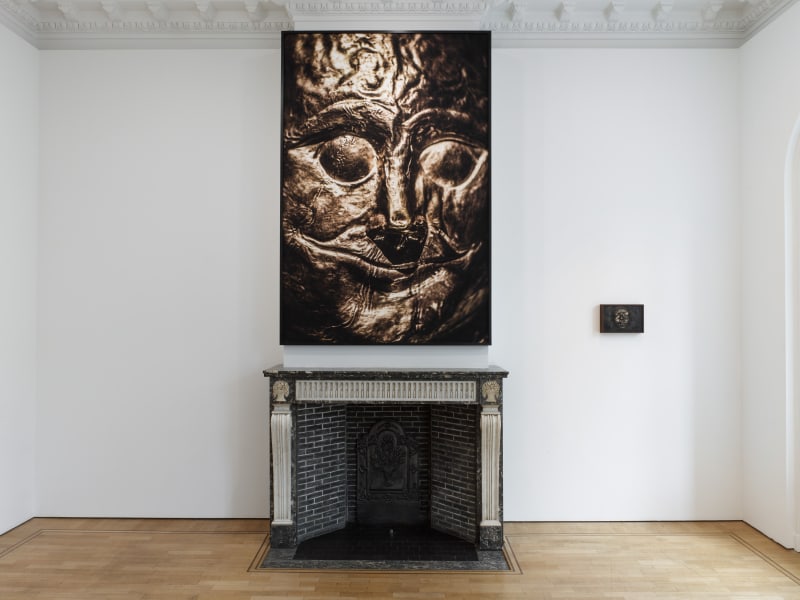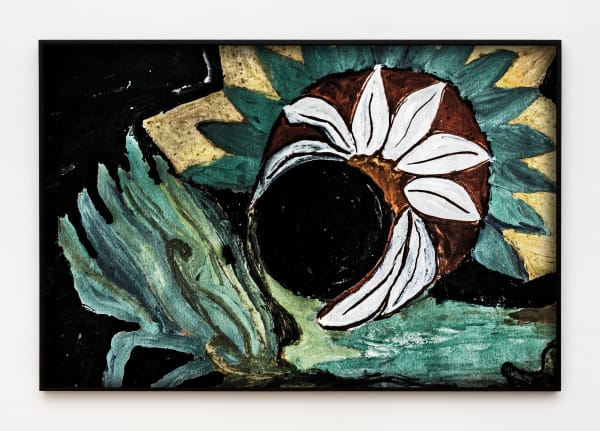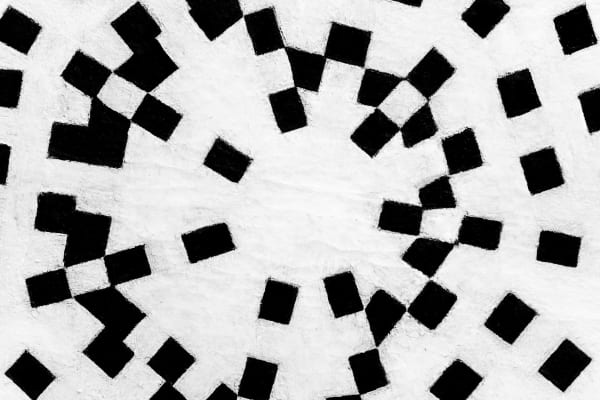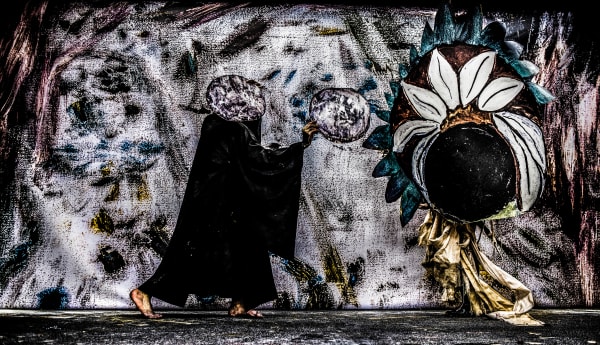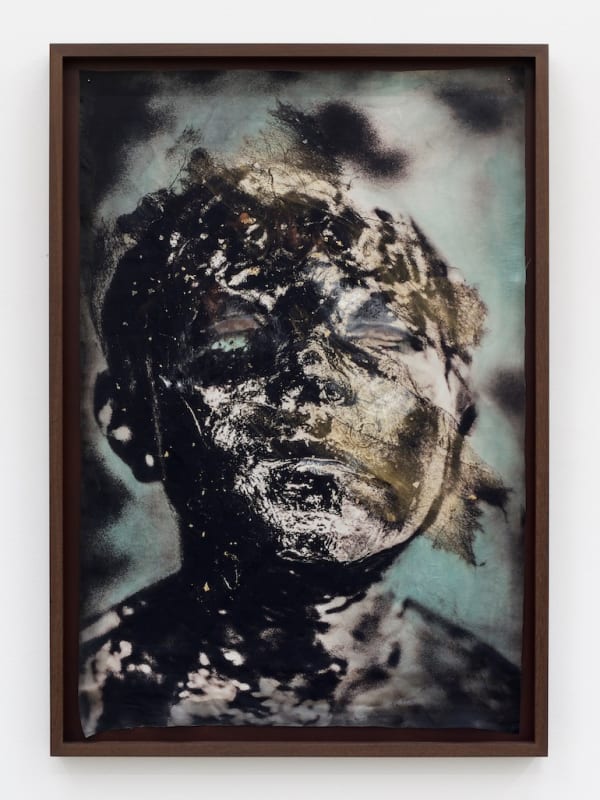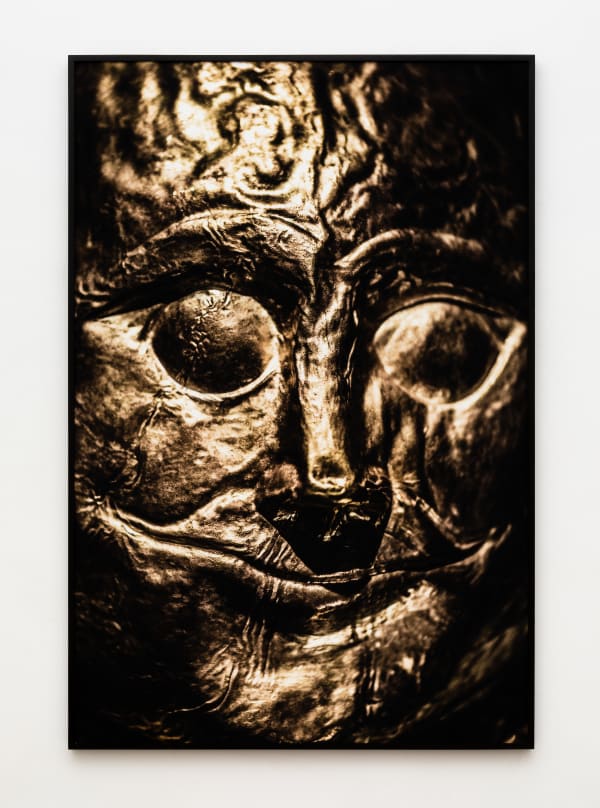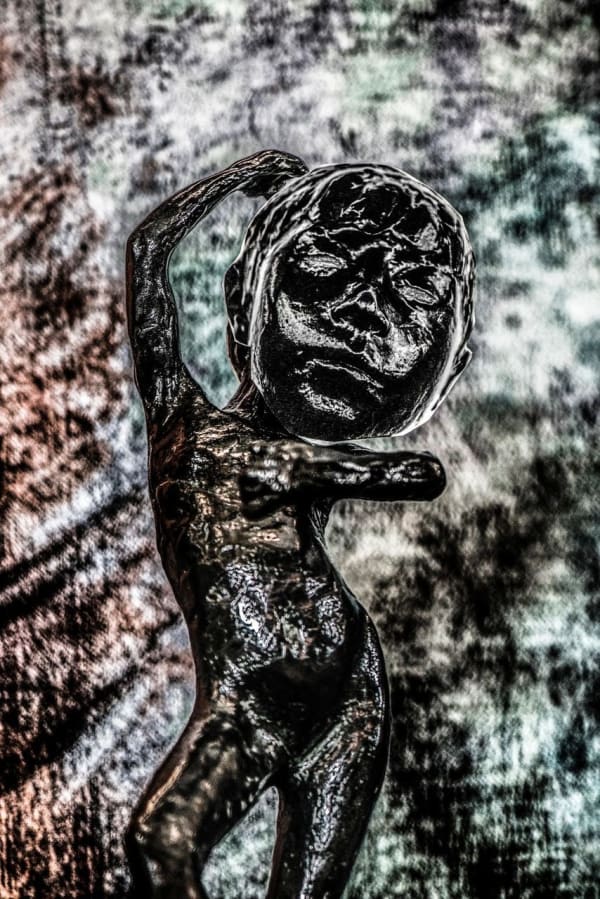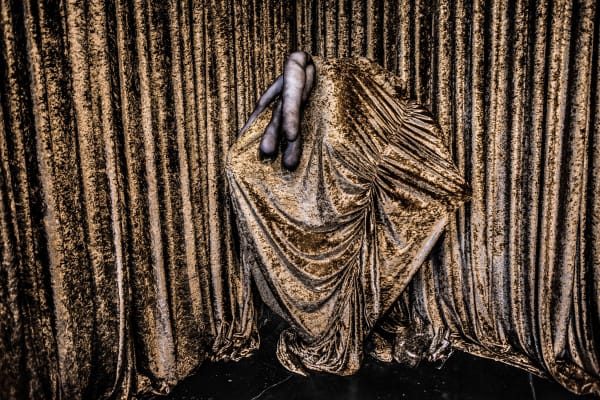THE THE SUN, BUT THE UNCOUNSCIOUS OF THE SUN Sofia Borges
Past exhibition
Overview
Mendes Wood DM is proud to present The Sun, The Sun, But The Unconscious Of The Sun, the first exhibition by Brazilian artist Sofia Borges in the Brussels gallery space. The show brings together works belonging to some of Borges’ most celebrated series made over the past three years, providing European audiences with a curated introduction to her practice. This exhibition will act as a prelude to the artist’s planned residency and subsequent solo show in Bruges, Belgium, later this year, in the context of the Triennial Bruges. It also runs concurrently with a major presentation at the prestigious Museum of Art of São Paulo Assis Chateaubriand (MASP), which sees Borges’ photographic research paired with the institution’s world-class collection of works by Edgar Degas.
At the heart of this show is a concise presentation of the deep investigation that Borges did as artist-curator for the São Paulo Biennial of 2018 at the Museum of Images of the Unconscious,
in Rio de Janeiro. This museum was founded inside a sanatorium by the famed 20th-century psychiatrist Nise da Silveira, who pioneered art therapy as an alternative means of treatment for cases of extreme schizophrenia, while rejecting aggressive treatments (such as electroshock and lobotomy) more commonly practiced during that period. She often identified Jungian universal archetypes that appeared spontaneously in the works of her patients, many of whom had little to no formal education. One of her patients was Adelina Gomes, a woman of African descent who lived in the sanatorium between 1937 and her death in 1984. During her time under Niseda Silveira’s care, Gomes produced more than 17,500 works of art. A recurring motif in Gomes’art was the image of a woman turning into a plant or flower, which connects her to the Greek myth of Daphne, who Apollo turned into a plant after his love for her was unreciprocated.
“For me Adelina represents the transmutation of death by becoming nature, becoming woman, becoming flower. During my research at the Museum of the Unconscious I was so impressed to realize the resilience of those patients during their long struggle through schizophrenia to once again become a whole self. And in my opinion, now more than ever, this strength for self healing as humanity couldn’t be more urgent for all of us”, Borges explains.
“This is how and why I created a conceptual bridge with the Degas project at MASP. This was another example of a feminine strength which, after going through many fractures, finally emerges again as symbolic of the urgency for deep self-strength and historical, as well as personal, reparation. This was what I recognized and brought to the surface from Degas’ 140year-old sculpture Little Dancer Aged Fourteen”.
Edgar Degas’ celebrated sculpture of a 14-year old ballerina was a work that was rejected in its own time for not being traditionally ‘pretty’ enough, and around which Borges created a complex photographic project on invitation from MASP. “Through my images I wanted to somehow bring about a historic, political and cultural reparation to representations of women of that period”, Borges says. Indeed the story behind the model for Degas’ sculpture is dark, at a time when often pre-pubescent girls were forced to turn to prostitution in order to fund their dance classes. Borges’ photographic series of this sculpture is currently on show at MASP alongside the sculpture itself. Borges, whose principal medium is photography, has begun expanding her practice and experimenting with new ideas, in particular during this project, in which she has started applying painterly techniques to the photographic print.
This exhibition shines a light on Borges’ interest in mythology, image-making and their relation to one another, explored through photography. As Nise da Silveira’s psychiatric institution looked for unprompted manifestations of Jungian archetypes in the unconscious of her patients, Borges’ work resurfaces these important findings and presents them to a contemporary audience through an alluring and singular use of photography to create viscerally powerful new images rooted in a universal history.
At the heart of this show is a concise presentation of the deep investigation that Borges did as artist-curator for the São Paulo Biennial of 2018 at the Museum of Images of the Unconscious,
in Rio de Janeiro. This museum was founded inside a sanatorium by the famed 20th-century psychiatrist Nise da Silveira, who pioneered art therapy as an alternative means of treatment for cases of extreme schizophrenia, while rejecting aggressive treatments (such as electroshock and lobotomy) more commonly practiced during that period. She often identified Jungian universal archetypes that appeared spontaneously in the works of her patients, many of whom had little to no formal education. One of her patients was Adelina Gomes, a woman of African descent who lived in the sanatorium between 1937 and her death in 1984. During her time under Niseda Silveira’s care, Gomes produced more than 17,500 works of art. A recurring motif in Gomes’art was the image of a woman turning into a plant or flower, which connects her to the Greek myth of Daphne, who Apollo turned into a plant after his love for her was unreciprocated.
“For me Adelina represents the transmutation of death by becoming nature, becoming woman, becoming flower. During my research at the Museum of the Unconscious I was so impressed to realize the resilience of those patients during their long struggle through schizophrenia to once again become a whole self. And in my opinion, now more than ever, this strength for self healing as humanity couldn’t be more urgent for all of us”, Borges explains.
“This is how and why I created a conceptual bridge with the Degas project at MASP. This was another example of a feminine strength which, after going through many fractures, finally emerges again as symbolic of the urgency for deep self-strength and historical, as well as personal, reparation. This was what I recognized and brought to the surface from Degas’ 140year-old sculpture Little Dancer Aged Fourteen”.
Edgar Degas’ celebrated sculpture of a 14-year old ballerina was a work that was rejected in its own time for not being traditionally ‘pretty’ enough, and around which Borges created a complex photographic project on invitation from MASP. “Through my images I wanted to somehow bring about a historic, political and cultural reparation to representations of women of that period”, Borges says. Indeed the story behind the model for Degas’ sculpture is dark, at a time when often pre-pubescent girls were forced to turn to prostitution in order to fund their dance classes. Borges’ photographic series of this sculpture is currently on show at MASP alongside the sculpture itself. Borges, whose principal medium is photography, has begun expanding her practice and experimenting with new ideas, in particular during this project, in which she has started applying painterly techniques to the photographic print.
This exhibition shines a light on Borges’ interest in mythology, image-making and their relation to one another, explored through photography. As Nise da Silveira’s psychiatric institution looked for unprompted manifestations of Jungian archetypes in the unconscious of her patients, Borges’ work resurfaces these important findings and presents them to a contemporary audience through an alluring and singular use of photography to create viscerally powerful new images rooted in a universal history.
Works
-
 Sofia Borges, O Tudo e a Flor de Adelina | Adelina’s Everything and the Flower, 2018
Sofia Borges, O Tudo e a Flor de Adelina | Adelina’s Everything and the Flower, 2018 -
 Sofia Borges, O Abstrato Sol , 2018
Sofia Borges, O Abstrato Sol , 2018 -
 Sofia Borges, Sem título / Untitled, 2018
Sofia Borges, Sem título / Untitled, 2018 -
 Sofia Borges, Untitled, 2021
Sofia Borges, Untitled, 2021 -
 Sofia Borges, O Dourado Cego Brilhante Deus Sorridente / The Smiling Blind Golden God, 2019
Sofia Borges, O Dourado Cego Brilhante Deus Sorridente / The Smiling Blind Golden God, 2019 -
 Sofia Borges, Untitled, 2021
Sofia Borges, Untitled, 2021 -
 Sofia Borges, Photographic Assemblage #19 from series The Unconscious of a Dance of Degas / Montagem Fotográfica #19 da série O Inconsciente da Dança de Degas, 2020
Sofia Borges, Photographic Assemblage #19 from series The Unconscious of a Dance of Degas / Montagem Fotográfica #19 da série O Inconsciente da Dança de Degas, 2020 -
 Sofia Borges, Untitled, 2021
Sofia Borges, Untitled, 2021 -
 Sofia Borges, Sem título / Untited, 2019
Sofia Borges, Sem título / Untited, 2019 -
 Sofia Borges, Untitled, 2021
Sofia Borges, Untitled, 2021
Installation Views
